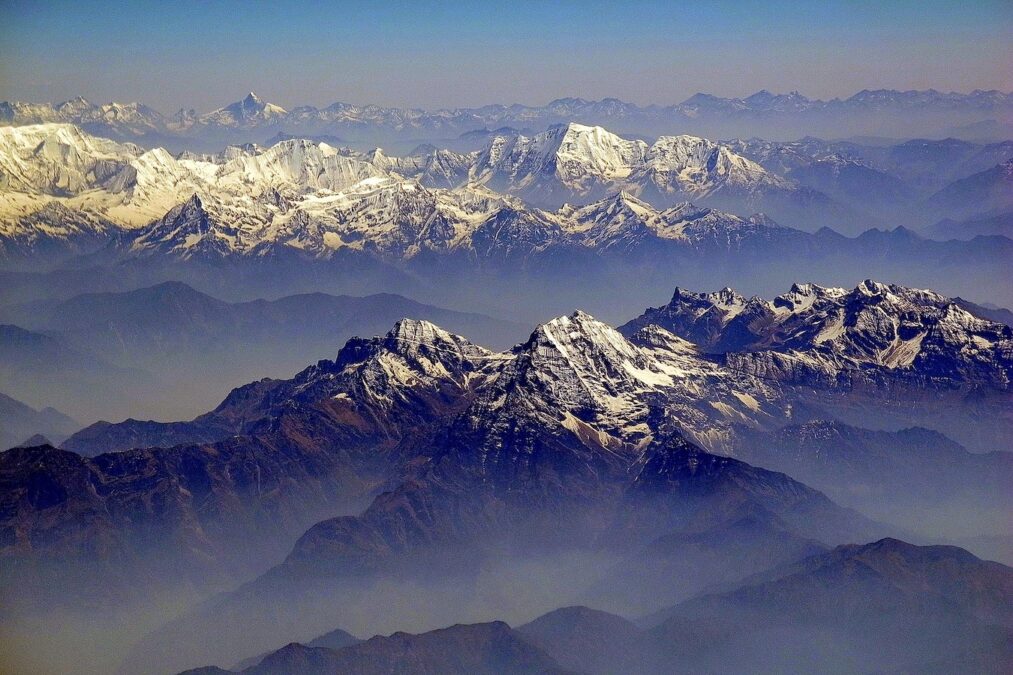
Tibetan Plateau soil temperatures are found to affect climate regionally, globally
UCLA study reveals that thermal variations can impact monsoons and flooding
Forecasting weather is tricky. Even with the most advanced technology, natural systems are so complex that meteorologists cannot accurately forecast beyond 10 days.
So predicting months and seasons into the future is challenging; yet that is the focus of a growing area of climate science that began in earnest in the 1980s. It started with the discovery of how weather patterns are affected by El Niño, a natural phenomenon that causes surface water temperatures in the eastern Pacific Ocean to rise for up to a year.
El Niño makes certain global weather conditions more likely: North and South America get more precipitation, while Australia gets less, and Japan is less likely to see an active cyclone season. Similarly, other ocean temperature conditions in the Atlantic and Pacific make regional and remote weather outcomes more likely, including rainfall in the tropics and the strength of major storms. Each new factor discovered improves researchers’ ability to forecast weather for months and seasons.
Over the past 20 years, UCLA professor Yongkang Xue has been learning how land temperature and moisture influences climate patterns. His latest paper, published in the Bulletin of the American Meteorological Societyand co-authored by a global group of elite scientists, found that soil temperature variations in the Tibetan Plateau affect major climate patterns, such as the East Asian monsoon — seasonal rains that help grow food, generate power and maintain ecosystems in lands populated by more than a billion people.
Soil temperatures on the Tibetan Plateau alter the temperature gradient from the Himalayan mountaintops down to the Bay of Bengal, the source of the monsoon’s moisture. In turn, that affects the pattern of high- and low-pressure systems and the jet stream — a high-atmosphere air flow with a powerful influence over where storms dump their precipitation. A colder Tibetan Plateau makes a weak monsoon more likely, the study found, while warmer conditions make a strong one more likely, with increased tendency to flood in the Asian monsoon region.
The effect mirrors one that Xue’s research found in North America. When the Rocky Mountains are colder in spring, the southern plains are more likely to see dry weather or drought conditions in summer. Conversely, a warmer spring increases the chance of wet conditions— including extreme flooding, such as Houston’s catastrophic Memorial Day Flood of 2015.
This latest study also found that temperature fluctuations of these two mountain systems are related through a Tibetan Plateau–Rocky Mountain wave train — a pattern of high- and low-pressure systems that stretches across the Pacific Ocean. When the Tibetan Plateau is warm, the Rocky Mountains are cold, and vice versa.
“It’s not only that the Tibetan Plateau’s temperature influences the eastern part of the lowland plains in China and the Rocky Mountains influence precipitation in the southern plains — it’s global,” Xue said.
Even changes of one or two degrees Celsius in surface temperatures can make a major difference, he says. This is because of the vastness of geological features like the Tibetan Plateau, which is about a million square miles of land with an average elevation of nearly 15,000 feet above sea level. In some locations, the temperature changes account for up to 40% of precipitation anomalies.
To reach their findings, researchers combined satellite- and ground-based temperature and precipitation observations with global climate models. The models simulate climate outcomes based on data measurements, with and without the influence of soil temperature changes in the Tibetan Plateau.
The study is the first to discover the relationship between soil temperatures of the Tibetan Plateau and global climate and weather phenomena. Xue stressed that much more research is needed to flesh out the details.
The goal of the research, which was organized by the World Climate Research Program and funded by the National Science Foundation, is to improve the ability to predict weather conditions months and seasons ahead. More effectively doing so could save billions or even trillions of dollars by giving industries such as agriculture better guidance. Having advance knowledge of a light monsoon season, for example, could guide farmers to plant more drought-tolerant crops. Better predictions can also help protect human lives in extreme weather and flooding.
Understanding the Tibetan Plateau’s influence on climate improves meteorologists’ and climatologists’ ability to predict seasonal and sub-seasonal climatic conditions. And, though the predictions are far from certain, even knowing there’s a greater likelihood of a strong monsoon or a drought is valuable, said David Neelin, a UCLA professor of atmospheric and oceanic sciences and a co-author of the paper.
“If you’re a farmer deciding how much crop insurance to buy and you can use this prediction across multiple years, you’ll come out ahead in the long term,” Neelin said. “It’s the same with El Niño. It doesn’t guarantee, but it helps.”




